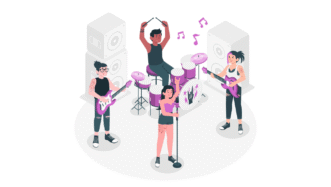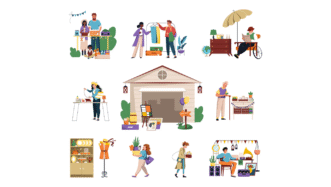LESSON OVERVIEW
This flipped lesson plan deals with a never ending debate about e-books and printed books. It is prepared for B1 students and consists of various grammar as well as vocabulary exercises focused on making comparisons. The video it’s based on is a short animation showing advantages and disadvantages of both formats.
Because the video for this lesson is short (4mins), you can use this lesson plan for a flipped classroom approach but it can also be used in full during the class just as any lesson plan.
This is a Flipped Classroom lesson plan. In a nutshell, it means that the first part of the lesson needs to be done by students at home. Learn more about flipped classroom and how we implement it in these lesson plans in our post.
PRE-CLASS ACTIVITIES: GRAMMAR – MAKING COMPARISONS
Pre-class activities basically focus on grammar. To be more precise, they involve making comparisons with the use of various structures and modifiers. First, students need to study a table with different grammatical issues: as + adjective + as, modifiers such as nearly, far, much, almost, slightly, etc. Then, they move to a task in which they have to choose true answers for each situations given. In the second task, they have to compare pairs of things using adjectives in brackets and newly-learnt structures. This whole pre-class worksheet can be used as a part of a standard lesson.
IN-CLASS ACTIVITIES: VOCAB, VIDEO and DISCUSSION
The in-class worksheet starts with a short warm-up task verifying whether students have done their homework and understand structures they’ve learned for making comparisons. The task includes images showing two contrasting objects such as a paper map and a digital map, cash and credit cards, and a pen and a keyboard. Your students need to orally compare and contrast those objects.
Next, they have a vocabulary exercise which contains verbs that will appear in the video. They have to match them with their meanings and then, in the following task, add one word to each verb that often goes with them. This way not only do they learn new verbs that will be used in the video but also learn the context in which they are used.
When watching the video for the first time, students have to note 2 advantages of paper books and 2 advantages of e-books. Later on, they watch the video again and have to decide whether given sentences are true or false.
The last section is focused solely on speaking. Your students first express their opinion and preference on the topic of the lesson, i.e. printed books vs e-books. Finally, they move to an open discussion related to books. Note that some of the questions include the phrases learnt in the lesson to reinforce new vocabulary.
WORKSHEETS
Subscribe to unlock these and many other Standalone lesson lesson plans with the Unlimited plan
Subscribe














I liked the worksheet as it triggers a valuable discussion, but the video itself shows a somewhat false comparison between e-books and printed books. It’s true that reading an e-book on a computer or other device with this type of screen, especially in dim light, can cause some eye fatigue (bigger than just after reading paper books for hours) and it’s far harder to concentrate when reading in a browser, but e-ink e-readers can be compared to paper books in this aspect. https://www.ncbi.nlm.nih.gov/pmc/articles/PMC3873942/ They also let us focus on the text as well as a paper book does, because we don’t get any notifications on the screen while reading. It’s worth mentioning to your students as some of them use e-readers quite frequently and you shouldn’t give them the impression that you never do your research 😀
Another thing – this time it’s about the worksheet – students get confused by the example given in ex 2: “Some people say cats are not as friendly as dogs”. My students find it confusing that there is an extra structure added and I think it could be easier if the exercise was only about the use of the phrases from the previous exercise, not about the use of “some people say”. They already have a lot on their plate with the complex and often new structures.
Well, at the end they don’t say that e-books are worse. They just compare a couple of aspects and at the end the video invites to start a conversation among your students and let them compare both media on their own.
In terms of that structure ‘people say that..’, we haven’t had issue with that personally on our classes but thanks for the feedback. We’ll bear that in mind for next lesson plans.
Well done Justa. A great lesson, with an excellent review and practice of comparatives. My students love it!
The only thing I would change is the table on slide 4—far too much information on one slide can be overwhelming for the student. Less is more! In other PowerPoint lessons, it is normally divided across 2 sides, one for comparatives with THAN and one slide with comparatives with AS…AS.
Keep up the inspiring and inspirational lessons!
Peter
Hi Peter! Thank you so much for you comment! I’m really happy you find the lesson useful! Regarding your suggestion, we decided to split the slide and we’ve already uploaded an updated e-lesson plan with our new layout. I hope you enjoy it 🙂
Very useful